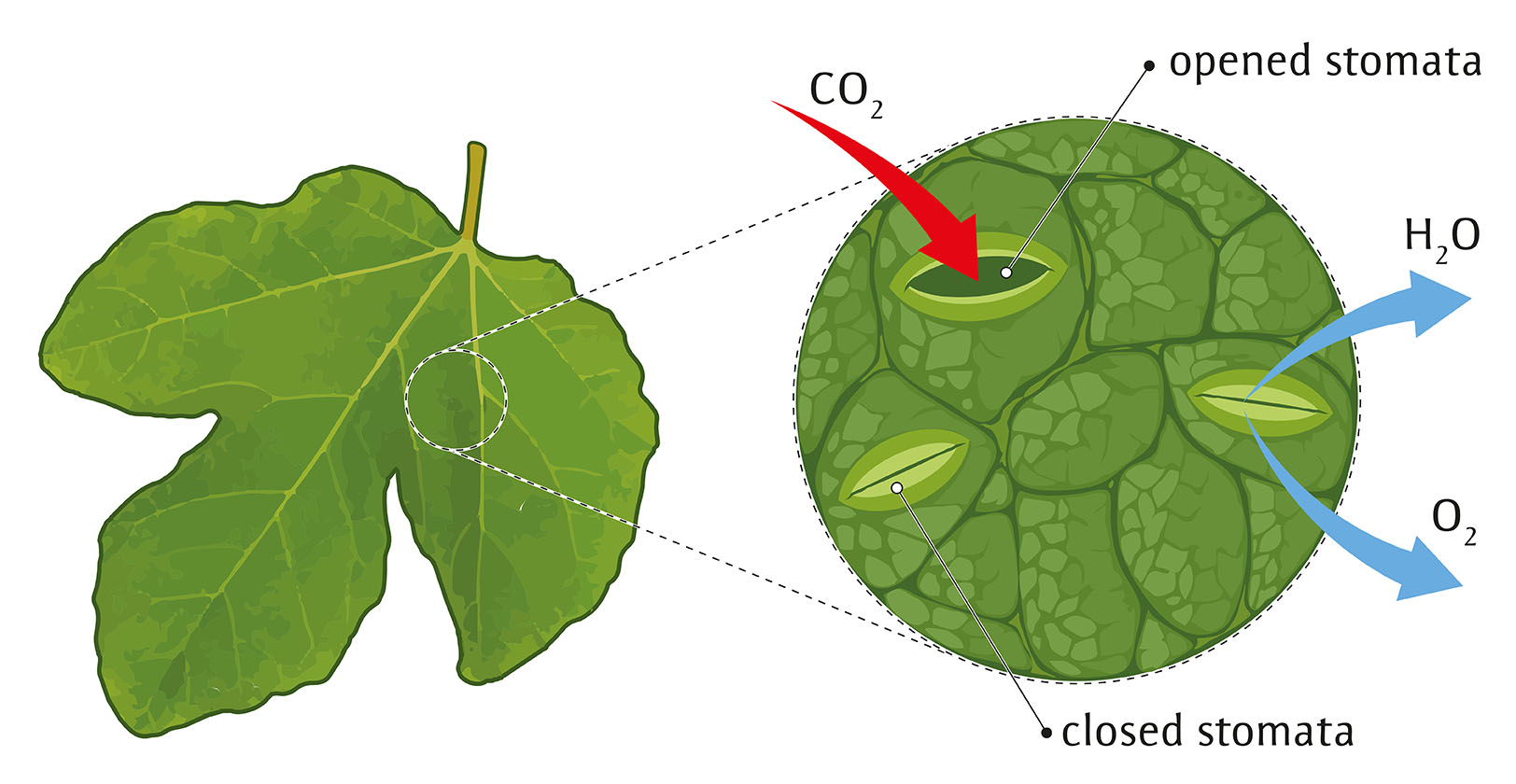
< Back
stomata
Definition
Stomata are tiny pores found on the surface of leaves. They are surrounded by two specialised cells called guard cells. The guard cells control the opening and closing of the stomata by changing their shape. When the guard cells are turgid (full of water), the stomata open. When the guard cells are flaccid (low on water), the stomata close.
The opening and closing of stomata is regulated by a number of factors, including light, humidity, and temperature. In bright light, the stomata open to allow more carbon dioxide into the leaf for photosynthesis. In low humidity, the stomata close to prevent the leaf from losing too much water. In high temperatures, the stomata may also close to prevent the leaf from overheating.
Stomata play an important role in the survival of plants. They allow plants to take in the carbon dioxide they need for photosynthesis and to release the oxygen they produce as a waste product. Stomata also help to regulate the water balance of plants.
How can the word be used?
The stomata in the leaves of the plant open and close to regulate the amount of water that is lost.

Different forms of the word
Noun: stomata (singular: stoma).
Etymology
The etymology of the word "stomata" is interesting because it shows how the word is related to its meaning. The word "stoma" literally means "mouth", and stomata are small openings in the leaves of plants that allow for gas exchange.
Question
What are stomata?
AQA Science Exam Question and Answer
Question:
Explain the role of stomata in plant physiology and their significance in regulating gas exchange. Discuss the factors that influence stomatal opening and closing, and how this process relates to photosynthesis and water conservation.
Answer:
Stomata are microscopic openings found on the surfaces of leaves and stems in plants. They play a pivotal role in plant physiology by facilitating the exchange of gases, such as oxygen and carbon dioxide, as well as water vapour with the surrounding environment.
Stomatal opening and closing are primarily regulated by two factors: light intensity and water availability. In response to light, stomata open to facilitate the entry of carbon dioxide required for photosynthesis. Conversely, when water is scarce, stomata close to minimise water loss through transpiration, a crucial adaptation for water conservation.
This balance between gas exchange and water conservation is vital for plant survival and growth. Stomata enable the intake of carbon dioxide, a raw material for photosynthesis, while simultaneously regulating water loss to maintain the plant's hydration. This process ensures that plants can perform photosynthesis efficiently while minimising the risk of desiccation.